 Armando Caligiuri electrons
in motion
Armando Caligiuri electrons
in motion| Italiano -English -Terms of use -Sitemap |
 Armando Caligiuri electrons
in motion
Armando Caligiuri electrons
in motion |
| Home-Informatics-Electronics-Radiowave-Audio-Seismo-Who i am-Contacts |
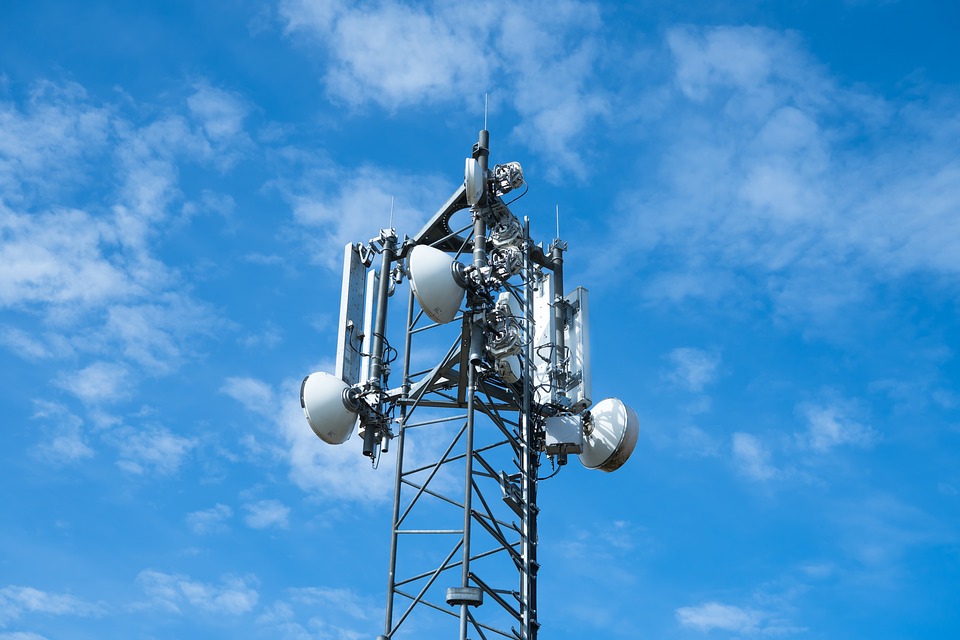 Welcome to the page dedicated to radio technology In this page I will try to convey to anyone who dedicates a few minutes to reading this text the basics of radio engineering, I will try to use as much as possible a concise language, so as to help those who approach this complex but magnificent subject to understand its meaning. I repeat as always that it is impossible to condense such a vast topic in a few lines, but if you need to delve deeper you can contact me by visiting the "Contacts" page. A thought and a thank you goes to the person who made possible all that we will talk about, that is Guglielmo Marconi, without him and his discoveries all that we will talk about on this page would not exist. Guglielmo Marconi who among other things accompanied in 1925 with his yacht Elettra to the port of Crotone his personal doctor, that is, my illustrious fellow countryman, the scientist, doctor and biologist Giuseppe Tallarico. Introduction Radio engineering is the science that uses electricity, electromagnetism and therefore electronics to send and receive radio waves for communication (radio communications) or control purposes. It involves the study and design of electronic devices for this purpose, namely radio transmitters, radio receivers and transmission and reception antennas. Trying to simplify the concept, it involves sending, into the surrounding space, electromagnetic waves (carrier) having an appropriate frequency and wavelength to which the information to be transported is appropriately superimposed (modulation). This work is carried out by the transmitter, which has connected to its output via a tuned transmission line (coaxial cable or waveguide) the transmitting antenna, which takes care of transducing the electrical signal into an electromagnetic field of intensity proportional to the power present at its input. All is based on oscillatory circuits, which can be of the series type or more often of the parallel type, they are electrical circuits that exploit the physical property of inductors and the ability to tune to a single frequency (electrical resonance) depending on the value of the components used, it can be deduced from this that to modify the resonance frequency and therefore select (receiver) or produce (transmitter) it is sufficient to vary the value of one of the components of the oscillatory circuit. The electromagnetic waves will then be received or transmitted by the antennas, which are also oscillator circuits tuned to a specific frequency. They transduce an electromagnetic field into an electrical signal in the case of reception, while they transform an electrical signal into an electromagnetic field in the case of transmission. In reception, the signal obtained from the receiving antennas is then sent via another transmission line tuned to the receiving apparatus (radio receiver), which, via the usual oscillatory circuit, will select from among the many, the frequency that we are interested in receiving and will separate the transmitted information from the radio frequency carrier (demodulation). We will address the chapter transmitters, receivers and antennas later, in separate discussions to better understand them. Sometimes the transmitter and the radio receiver can coexist in a single electronic device, in this case we speak of a transceiver. The frequencies and therefore wavelengths on which it is possible to transmit are reported in the electromagnetic spectrum and indexed in various bands visible in the enlargeable tables that you find on the line below.  Electromagnetic spectrum  Division of the electromagnetic spectrum into bands The choice of transmission band depends on the distance to be covered and the orography of the terrain, this is because signals having frequencies in the low part of the spectrum have the capacity to overcome obstacles that come between the transmitter and the receiver (prevalence of the magnetic component over the electrical one), but must be supported by high powers with relative proportional electromagnetic pollution. Furthermore, up to approximately 30 MHz, the reception of these emissions is affected by the so-called fading, that is, the continuous variation in the intensity of the received signal. This is due to the continuous variation in the thickness of the layers of the Earth's atmosphere which reflect this type of signal and allow it to propagate over long distances. Direct wave propagation remains stable. Unfortunately, the use of low bands, due to the limitations exposed before, is gradually falling into disuse, they are replaced by internet streaming and digital satellite communications which allow good quality without the intrinsic limitations of this type of emissions. However, they are still mainly used when large spaces need to be covered with a single transmitter. As the frequency increases, electromagnetic waves tend to be absorbed and shielded by obstacles in the way, until after 30 MHz they have an optical range, that is, the transmitter must see the receiver, otherwise reception of the radiated signal becomes impossible, but there is the advantage of being able to use relatively low transmission powers, given the need to install more than one transmission system to cover a given area. However, we always try to place them in the highest possible position to extend the optical horizon and therefore increase the area served by the transmission system. It must also be kept in mind that the choice of transmission band directly affects the quality of the information transmitted, this is because in the low bands we are forced, given the little space available, to use narrow transmission channels, all this implies that regardless of the type of method used to superimpose the information on the carrier (modulation), the maximum modulatable frequency is 4.5 KHz if the transmission channel is 9 or 10 KHz, and 3 KHz if the channel is 5 KHz wide. It goes without saying that using narrowband FM frequency modulation, which is insensitive to disturbances of any kind, the quality improves greatly, but the limitation remains. Then using wideband FM, which unfortunately is necessarily confined to the high bands given the 75 KHz channel, the maximum transmittable frequency becomes 15 KHz and therefore Hi-Fi quality. With digital modulations, the quality then depends on the B.E.R. (bit error rate) and the type of data compression used, there is still the advantage of very high immunity to disturbances and the possibility of transmitting large quantities of information in a narrow channel (compression). Generally, the optical propagation of electromagnetic waves with very high frequency is used for point-to-point communications, that is, radio bridges are created, which are used to create communication backbones (telephone, TV, radio or other), to which the local transmitters will then be connected. The radio bridges can be depicted as in the figure below. 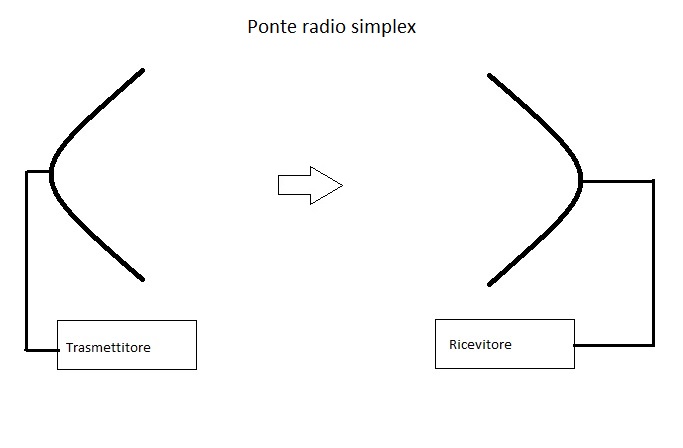 In radio bridges, very directional antennas are used, usually parabolic. Below are some images that will allow you to better understand what has been exposed.  Transmission system with radio bridges and RADAR  Satellite dish for space communications  Series type oscillatory circuit  Parallel type oscillatory circuit Transmitters To transmit radio waves through antennas, we use devices designed and built for this purpose. We are talking about radio frequency transmitters, which are very complex devices, made up of various stages, different depending on the type of modulation used, but which always include, as the first stage, an electronic oscillator that generates the carrier having the desired frequency and, as the last stage, a power amplifier that raises the voltage and current values to the appropriate values needed to generate the power needed to cover the desired distance. The oscillator is an electronic circuit using active and passive electronic components, it generates (through a tuned oscillatory circuit and an active transistor or electron tube component configured as a positive feedback amplifier) an electronic signal of a frequency established during the design phase, which must coincide with the transmission frequency that interests us, and it is very important that the oscillator provides a signal with a frequency that is stable over time, to achieve this a particular piezoelectric effect component called quartz is introduced into the oscillatory circuit, which stabilizes the oscillation and makes it independent of the supply voltage and within certain limits also from the temperature. In multi-channel circuits, to avoid using many quartz, a particular circuit called P.L.L. (phase locked loop) is used, which uses a single quartz to generate all the frequencies in a stable way. Lately, a new concept digital circuit called D.D.S. (direct digital synthesis) with numerical control is gaining ground, which has many advantages over analog ones. 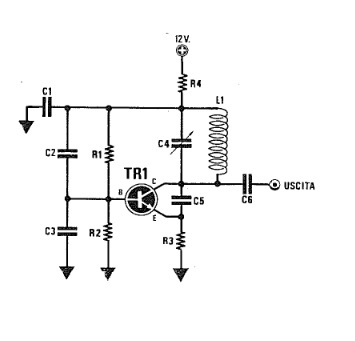 Typical electronic oscillator with transistor The output signal from the oscillator then reaches the modulator stage, the modulator circuit that superimposes the information to be transmitted on the carrier to be radiated. It is different depending on whether you use amplitude modulation (AM) in which the carrier frequency remains stable and its amplitude varies, or frequency modulation (FM) in which the amplitude remains stable and its frequency varies, or phase modulations such as FSK or AFSK. There are also digital modulations (Spread spectrum used for wi-fi) and for D.A.B.+, this requires a different modulator for each type. Finally, the modulated signal reaches the selective power amplifier stage, which raises the voltage and current values until reaching the power that the project requires in order to cover the pre-established area. The transmission line that will carry the signal to the antenna is connected to the transmitter output via a specific connector. It should be noted that all coaxial cable or waveguide transmission lines have a characteristic impedance that must be respected along the entire path, to avoid mismatches and signal losses, both in transmission and reception. The characteristic impedance in transmission is usually set at 52 Ω in transmission devices and 75 Ω in reception devices. Below is the enlargeable block diagram of a generic transmitter and other explanatory images.  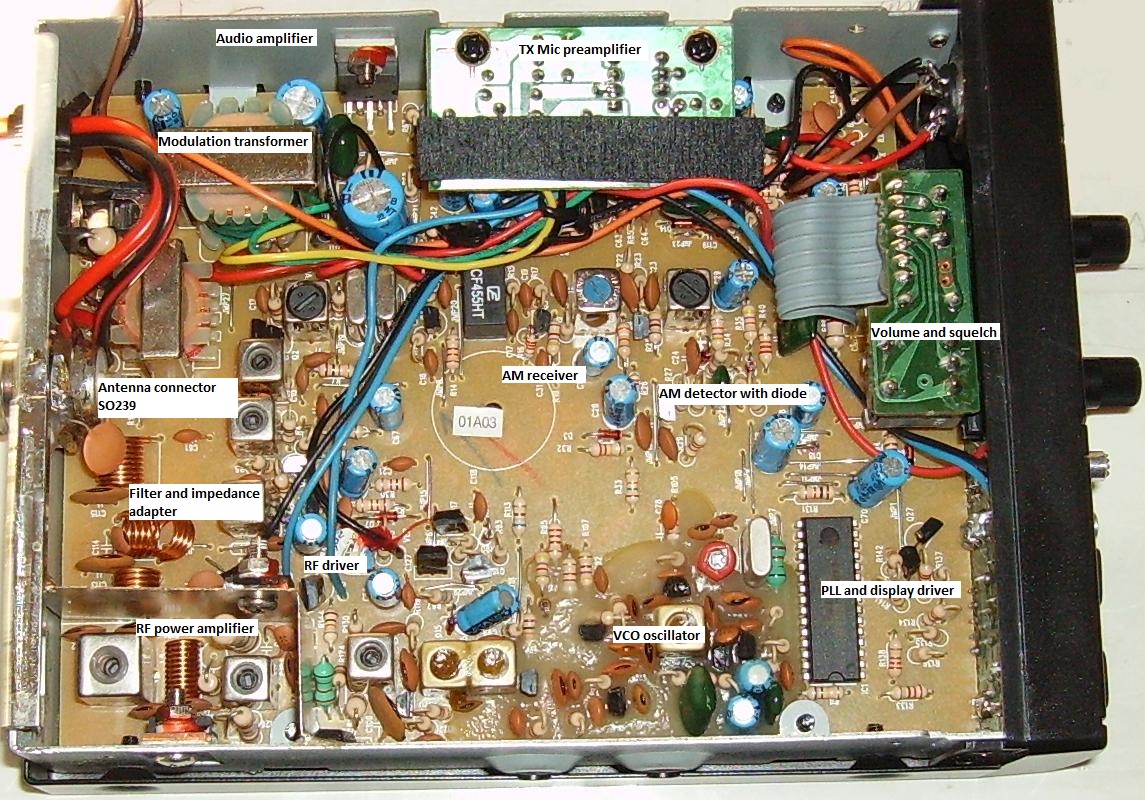
Zoomable view of a transceiver  Radio TV transmission systems 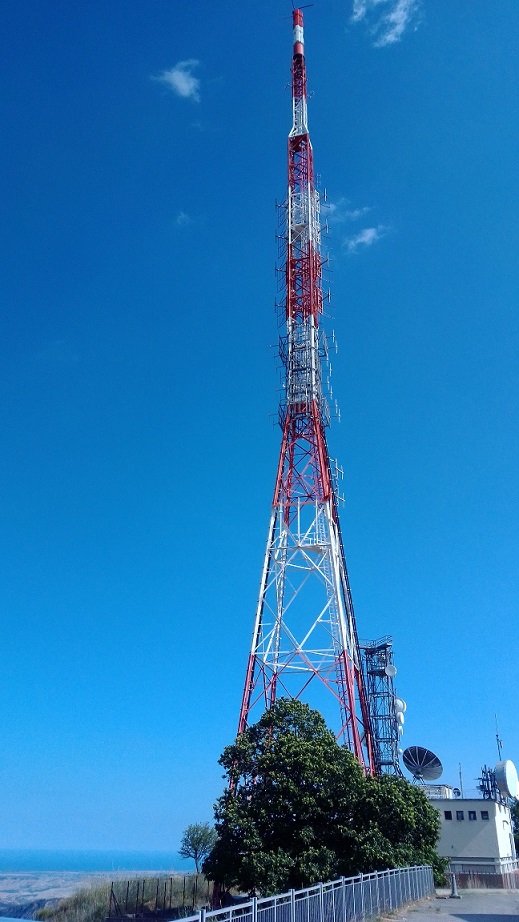 Rai-Way broadcasting center, San Nicola dell'alto 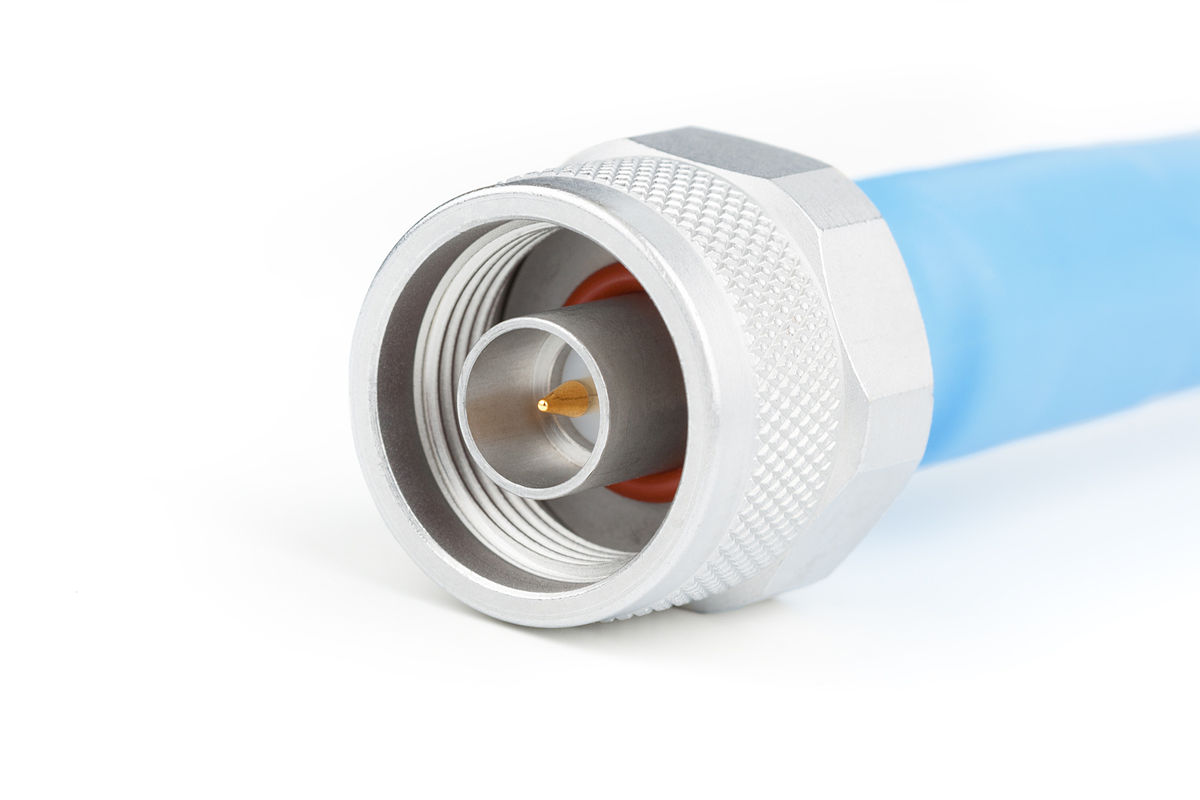
Waterproof connector with 50 Ω impedance, type N Radio receivers The radio receiver is an electronic device that restores (demodulates) a signal previously transmitted by the radio transmitter. We will consider only the most widespread one, that is, the superheterodyne type. The signal collected by the receiving antenna, transformed from an electromagnetic wave to a electric signal by the same, is then sent to the input of the receiver, which as a first stage has a band-filter amplifier tuned to the frequency to be received, it is an amplifier for small signals and low noise, so as to be able to amplify even low intensity signals and therefore increase the sensitivity of the receiver. The following stages in case of a superheterodyne receiver are a variable frequency oscillator (local oscillator) tuned to the frequency to be received minus the value of the intermediate frequency (455 KHz in case of AM receiver and 10.7 MHz in case of FM) and a converter-mixer stage where the signal coming from the antenna-amplifier-filter (front-end) is mixed with that of the local oscillator. At the output of the converter we find a fixed frequency signal, regardless of where we tune the oscillator circuits of the input filter and the local oscillator, this signal is the result of the beat between the two frequencies (intermediate frequency). The intermediate frequency signal is then sent to two or three tuned and selective amplifier stages, which amplify only the intermediate frequency and eliminate any other unnecessary signal. The receiver stages as described up to now are the same regardless of the type of modulation, however the following stage, the demodulator, is different depending on the signal to be demodulated. It is simple (a diode and a low value capacitor) in the case of AM, much more complex in the case of FM and with an increasing complexity with phase or digital modulations. The next and final stage is an audio amplifier, which amplifies the demodulated signal so as to drive a speaker, it may be of the type described on the active components page of this site. There are also direct amplification receivers, that is without a local oscillator and mixer, but only with an oscillatory circuit tuned to the antenna input, the demodulator and an audio amplifier. Of course these types of receivers cannot have the sensitivity and selectivity characteristics of superheterodynes, but they are fine to start with, you can find a feasible example in the figure just below. Recently, new generation single chip receivers (D.S.P.) have appeared on the world market, in which the signal processing after tuning and conversion is carried out in a totally digital way via A/D conversion. The advantages are many, including better filtering, elimination of noise, etc., but above all the greatest advantage is that the entire receiver is contained in a single integrated circuit of very small dimensions and negligible cost. A typical one chip receiver circuit of this type is the SI4702 of which you can find the datasheet at this link. The disadvantages are a lower sensitivity in some cases, an adaptation to signal variations that is not exactly fast and an audio quality that is in some cases questionable or with a feeling of artificiality. Below are some explanatory images, for a better view you need to enlarge them.  Block diagram of a typical superheterodyne receiver  AM-FM Superheterodyne Receiver Inside View 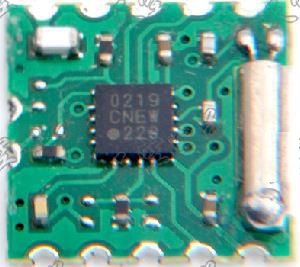 SI4702 All-in-one DSP Tuner 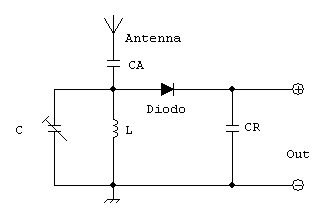 Direct demodulation AM receiver 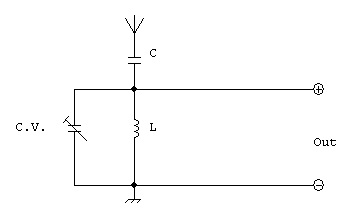 Tuned front-end without demodulator  Enlargeable schematic of a superheterodyne receiver  Scale of a vintage radio receiver Receiving and transmitting antennas To To conclude the vast subject of radio engineering, we will now talk about the component that is perhaps less considered (at amateur level) in this field but which is in fact the most important, that is, the antenna. It serves to radiate the signal produced by the transmitter and to receive the same signal at the input of the receiver. Receiving and transmitting antennas are based on the same physical laws and are reversible, that is, the same antenna can be used for both receiving and transmitting, of course if it is sized to receive the power of the transmitter. The receiving antenna is a tuned resonant system, which supplies an electrical signal to its ends that is proportional to the electromagnetic field in which it is immersed. The transmitting antenna is a tuned resonant system that creates an electromagnetic field around itself that is proportional to the power of the signal applied to its ends. The value of the frequency and wavelength in which it resonates, and therefore the one in which it has the maximum sensitivity or efficiency, depends on its physical dimensions, so the ideal antenna for a given frequency must be the same length in meters as its wavelength, in this case we speak of a full-wave antenna, which is then the one with the highest efficiency. Antennas can also be made with submultiple measures of the wavelength such as 1/2, 3/4 and 1/4 accepting a small drop in conversion and propagation efficiency, but this allows for much smaller antennas in the case of transmissions in the lower part of the electromagnetic spectrum. The simplest antenna that can be made and which is the basis for all the others is the Hertzian dipole, it is composed of two elements of conductive material with a total length that can be calculated using the formula 300,000/frequency, where 300,000 is the speed of light in Km/s, and the frequency is the one in which the dipole must work and is expressed in Hertz. Starting from the dipole, which if placed in a vertical position radiates its field omnidirectionally and if placed horizontally is directional, by adding other passive dipoles, we obtain directive or directional antennas, that is, antennas that have the characteristic of radiating in only one direction. The advantage of directional antennas is to concentrate the radiated field or the received field in a single direction, so as to serve only a certain area, or to receive only in one direction and discard all the others. The most used directional antennas are the Yagi and the parabolic, used for its high directionality in radio bridges or for cosmic or satellite communications. The antenna will then be connected to the transmitter or receiver via a transmission line formed by a coaxial cable with a characteristic impedance equal to that of the transmitter output or the receiver input. The coaxial cable is formed by a conductor immersed in a cylindrical insulating material and in turn covered by a braid of conductive material with the function of a shield towards the internal conductor. The whole is protected by a sheath of plastic or rubber material that isolates everything from rain and mechanical trauma. The section of the cylindrical insulator determines the characteristic impedance of the transmission line and as said before to avoid losses it must coincide with that of the device to which it will be connected. By clicking or tapping on this text you can download an XLS file created by me specifically with which it is possible to calculate a dipole starting from the frequency on which it must resonate. Below are some illustrative images.  HF short wave dipole antenna  Transmission lines to antennas  Directional parabolic antenna for 2.4GHz WI-FI  Self-radiating guyed pylons for medium wave  Representation of a classic transmission line dipole  Tower with radio bridges and duplex panels for cellular telephony  Transmission line with Cellflex cable  Antennas for VHF and UHF, Yagi directional TV bands  "Logarithmic" multiband antenna In conclusion I want to reiterate that it is impossible to condense in this small text everything there is to say about radio engineering, but if you intend to delve deeper or need professional advice you can contact me via the "Contacts" page. Thank you for visiting my site. |

 |
|
Home Informatics, Computer networks, Software Electronics, Active components, Passive components Radiowave Seismology Contacts Who i am Audio Created and maintained by Armando Caligiuri (C) 2025 4.0 Responsive version Armando Caligiuri, Electronic senior expert Electronic and I.T. maintainer Electronic project implementer I.T. consultant To use the contents visit the Disclaimer page |